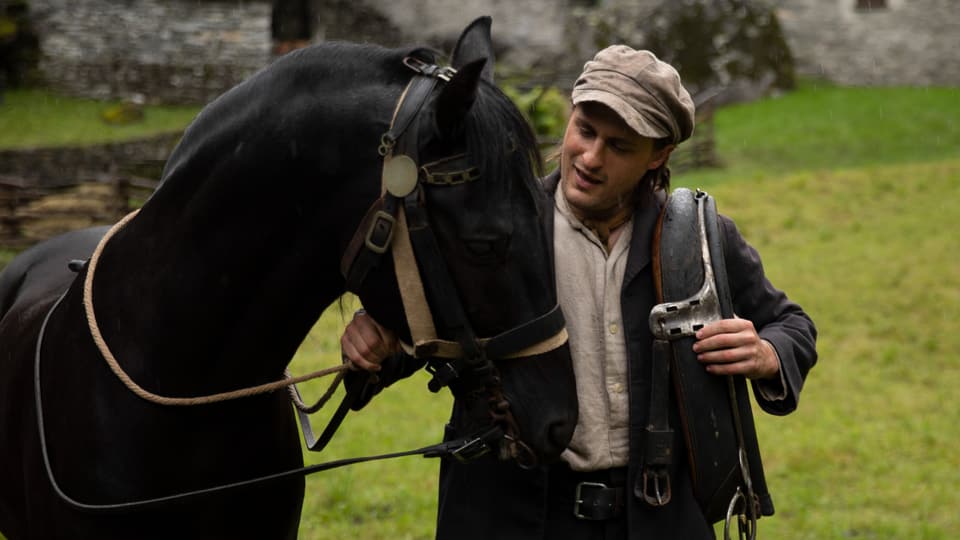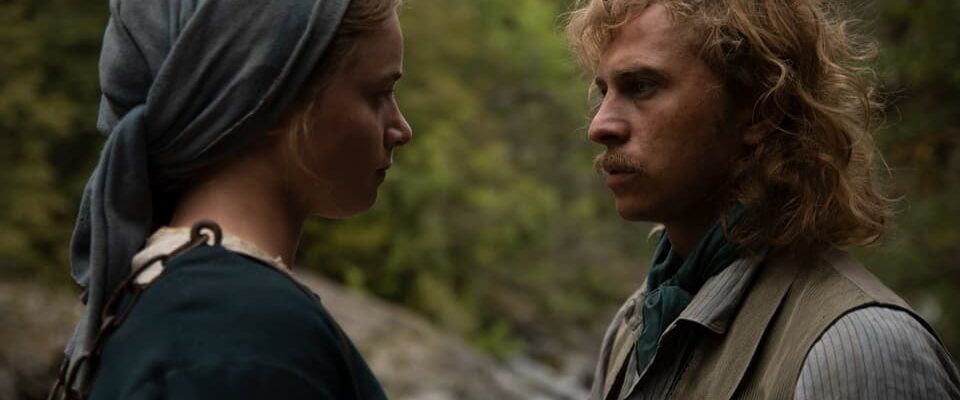Contents
Silvia Tschui’s bestselling novel “Jakobs Ross” has been made into a film. Luna Wedler plays the singing maid who is married to a servant.
The maid Elsie hisses that she can sing in church, not while cleaning. Elsie is a factory owner’s maid but dreams of a life as a singer.
The patron’s daughter likes the maid’s singing and suggests to her father that Elsie be given a scholarship to study music in Florence. However, the director likes other advantages of the maid.
Soon afterwards, the dream of Florence is over: the landlord marries the pregnant Elsie to his horseman Jakob and provides them both with a cow on a crumbling small farm.
While Elsie continues to dream of a music career, Jakob wants to own his own horse as a teamster. Elsie wants to stand by his side, even if the two were forced to marry: “Lueg Jakob, I want numen eis: Make music. As long as I can do it, I’ll take revenge with the horse!”
Self-determined forced marriage
A handshake between the two young people gives their future forced community a touch of modern self-determination and is programmatic for Katalin Gödrös’ film.
In the film, they concentrated on what, in their eyes, was the modern thing about Silvia Tschui’s story, says the director: “The relationship between Elsie and Jakob.”
Legend:
Elsie and Jakob form a self-determined community out of compulsion.
Ascot Elite
In contrast to the book, which counteracts the brutal harshness of its characters’ lives with its quicksilver, dialect-tinged flow of language, Elsie and Jakob remain realistically taciturn in the film.
Attention to detail ensures realism
The book repeatedly sketches fantastic scenes, such as the rats in the basement, who all drop dead because of the beauty of Elsie’s singing. Gödrös, on the other hand, relies on a painful, historically precise realism, which is further enhanced by the way the camera brings the uninvolved beauty of nature onto the screen.

Legend:
The film was shot in Ticino and Bergell, as well as on a few days in a studio in Luxembourg.
© 2024 Ascot Elite Entertainment. All Rights Reserved.
In the book, the story is set to 1869 with a journal entry from the factory director. In the film, on the other hand, the rural setting seems almost timeless, even if Katalin Gödrös emphasizes that they paid meticulous attention to historical details when designing the equipment. Everything, from the wooden shoes to the music, was designed to be as accurate as possible to 1870.
Film makes its own statement
This attention to detail and the historical accuracy of the equipment in the film contrast with the colorful imagery of the novel. This means the film stands on its own two feet as an impressively realistic interpretation of the book.
The singing, radiant heart of this film, defying suffering and hardship, is Luna Wedler’s Elsie.
Cinema release: January 18, 2024
Radio SRF3, January 17, 2024, 4:15 p.m.
